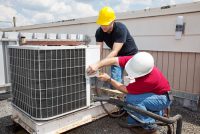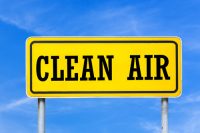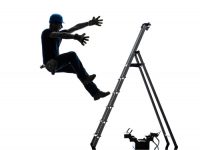Category: Special Topics in Safety Management
Safety is a process, and as such, needs to be managed. This section offers resources to create a viable safety program, sell it to senior management, train supervisors and employees in using it, and then track and report your progress. Look also for ways to advance your own skills in these areas, both for your current job, and those that follow.
In the safest workplaces, supervisors aren’t just safety rule enforcers, they’re also safety role models. Employees’ behavior on the job is significantly influenced by the way their supervisors think and act about workplace safety. Studies show that supervisors’ effectiveness in accident prevention is dependent on the behavior they model for employees. If workers believe that […]
Yesterday, we talked about the problems caused by poor indoor air quality in the workplace. Today, we focus on solutions. OSHA recommends a systematic approach to indoor air quality problems of the type you use to address other health and safety problems. "Management needs to be receptive to potential concerns and complaints, and train workers […]
Some experts believe that more people may suffer from indoor air pollution than outdoor air pollution. How about your employees? Most Americans spend about 90 percent of their time indoors. Poor indoor air quality can cause all kinds of ailments and discomforts, including many that can mimic symptoms of allergies, stress, colds, and flu. Indoor […]
Yesterday, we reviewed the first 4 steps toward world-class safety performance. Today, we present the rest. 5. Be Ready for Anything Be prepared to handle a wide-range of unexpected events effectively. Emergency plans should anticipate all possible contingencies. Make sure your plans include at least the following: Procedure for reporting emergencies Evacuation policy, procedures, route […]
Today, we present the first 4 steps, and tomorrow we’ll review the rest. 1. Engage Employees Involving employees in the safety process is essential to safety success. It provides a way for them to demonstrate and share their commitment while building pride, ownership, and skills. Here are a few proven methods to spark participation:
Falls are a leading cause of workplace injury and death. Fall protection also routinely makes OSHA’s Top 10 Violations list every year. Employees fall for many reasons: unstable working surfaces, improperly positioned ladders, misuse of fall protection, and unprotected sides and edges of working surfaces. OSHA says that you must set up your worksite to […]
Yesterday, we explained how Cintas® Corporation is making workers safer by innovating. Today, we introduce you to another VPP worksite where innovative programs are also improving safety performance. Morton Salt’s Grantsville, Utah, facility is one of the company’s four worksites to have earned VPP Star status. About 10 years back, the Grantsville plant had received […]
Read about a VPP worksite that is succeeding in making employees safer by innovating.
Yesterday, we presented answers to a number of important questions about electrical safety. Today, we review some more electrical safety FAQs. What is the best way for employees to protect against electrical hazards? Most electrical accidents result from one of three factors: Unsafe equipment or installation Unsafe environment Unsafe work practices Accidents and injuries can […]
In today’s Advisor we focus on some frequently asked questions about electrical safety, with answers provided by OSHA. What causes electrical shocks? Electricity travels in closed circuits, normally through a conductor. But sometimes a person’s body—an efficient conductor of electricity—mistakenly becomes part of the electric circuit. This can cause an electrical shock. Shocks occur when […]








